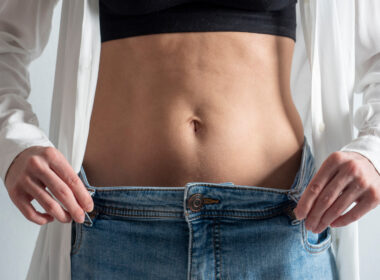How fertility-awareness methods can be a game-changer for your health and wellness too
Many people are still celebrating the U.S. Women’s National Team’s victory at the World Cup this year, and now we have even more reason to do so. This week, Good Morning America reported on the “innovative period tracking” the USWNT’s coaches used to optimize the twenty-three players’ performance.
Dawn Scott, coach for both the USWNT and the National Women’s Soccer League, has tracked the basics of her players’ cycles for years. As the World Cup approached, she took things to the next level, having noticed certain players had consistent symptoms each month that impacted their performance. She found assistance from Dr. Georgie Bruinvels, a research scientist and creator of Fitr Woman, an app that helps guide women’s nutrition and physical training in light of their menstrual cycles.
There’s a lot more to tracking a woman’s cycle than noting when her period begins, how long the flow lasts, and how many days pass before menstruation begins again. Identifying also the pre-period day of ovulation (on average 13 days before her period, but identifiable down to the exact day in a woman’s cycle if she knows how to chart cervical mucus) means she can also see when various hormone fluctuations occur in her body, and she can connect those markers with other symptoms she’s experiencing. Sometimes this can indicate causes of infertility, like such health conditions as PCOS (polycystic ovarian syndrome) or endometriosis. In these cases, more astute observations mean tailoring daily habits to the needs of each player’s unique physiology.
In order to chart her cycle, a woman cannot be on hormonal birth control at the same time, because it suppresses ovulation and replaces natural menstruation with artificial bleeding that is not an actual period—that is, the shedding of the uterine wall—but something called breakthrough bleeding. In other words, if a woman is taking a drug that delivers synthetic hormones, she cannot read the body’s natural signs about her cycle and hormone levels and make health decisions based on them.
What This Has To Do with Sports
It’s common for coaches and personal trainers to assist athletes with multiple aspects of their health management to equip them to perform at their best. What the USWNT tapped into is that there’s a wealth of information we can gather from one’s menstrual cycle about her fertility health, and that information can inform judgment calls on nutrition and exercise.
Together, Coach Scott and Dr. Bruinvels created a profile for each member of the team, showing which phase of her cycle she was in each day. With that information, the coaching staff made suggestions to ensure players were eating what would fuel them best, making any changes necessary to get restorative sleep each night, hydrating adequately, and dedicating time to recovery.
Board-certified OB-GYN and ABC News chief medical correspondent Dr. Jennifer Ashton says, “The fact is, female athletes are biologically, hormonally and physically different, and the sooner that reality is embraced instead of resisted, the more potential exists for that athlete to optimize her training behaviors.”
It’s worth noting that a big issue many female athletes face is amenorrhea—that is, the lack of periods—caused by if they overwork and don’t eat enough. When this happens, typically doctors will prescribe them the Pill to have fake periods which, instead of solving their health problem, risks causing other issues. This is why charting for athletes is huge.
How This Relates to Every Woman
We’ve all noticed various symptoms that come with different stages of our cycle: more energy, less energy, poor sleep, cravings for junk food, moodiness, and so on. For too long, these symptoms have either been accepted as an unfortunate part of being a woman of reproductive age or used as a rationale to downplay women’s abilities and undermine their potential. It’s great to see a more constructive mentality coming to the fore, and on the world stage, no less.
Those of us who don’t have a team of professional trainers on hand can still use the knowledge of our cycles to help us feel our best in or out of the gym. By charting your menstrual cycle with a Fertility Awareness-Based Method, you can know what stage of your cycle you are in and tailor your diet and exercise to maximize your energy and wellbeing. Light cardio and yoga can be good workout choices during menstruation, when you may experience cramping. In the days before you ovulate, you can typically push yourself a bit harder, so schedule high-intensity interval training (HIIT) or weight training to help build strength and muscle.
Your hormones dip and rise with ovulation, so plan for steady, lower-intensity exercise, like the elliptical or body-weight work, for a week or two after you ovulate. In the days before you get your period, you may need to scale it back even more, as you will tire more easily. But don’t stop moving altogether: staying active can help ease PMS symptoms.
Every woman’s body is different, and it is high time that the dynamics of our physiology are celebrated and honored. The women of the USWNT are the latest reminder that women are capable of so much—not to emulate men, but because our unique and powerful bodies are triumphs in themselves.











